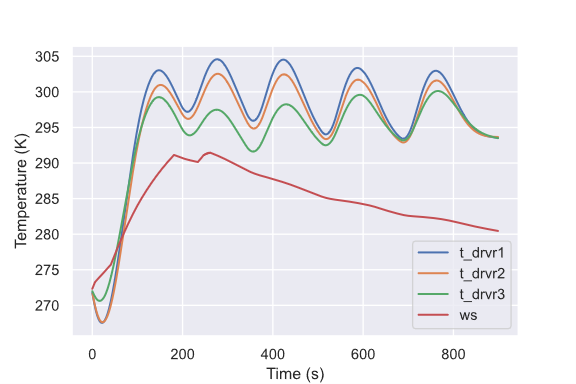Integrated simulator – October 2021
Result from partner:
- COV (James Brusey)
Result has been achieved in October 2021 : month 48 of the project.
Short introduction
Simulation is a key piece in the puzzle of engineering high performance systems. Furthermore, computationally fast simulation enables modern computer optimisation approaches that have traditionally been inaccessible. Simulation of the thermal aspects of the car cabin can be broken into two main parts:
- simulation of the operation of the HVAC (Heating Ventilation and Air Conditioning) that determines the temperature and flow rate of air through ducts and into the cabin.
- simulation of the cabin including air flows, radiant effects, and any heated surfaces (such as, heated seats).
With the introduction of this integrated simulator, we provide a computationally fast, coupled cabin and HVAC simulation that supports the development of a closed loop control system. This simulator outperforms existing systems both in terms of computation speed (a few hundred microseconds per cycle compared with about 1 second per cycle for 0D simulation) and resolution (12 physical locations with three variables each compared to one or two cabin-average variables for 0D simulation).
Objective
The objective of DOMUS is to reduce the energy consumption of Electric Vehicles (EVs) and thus to extend the range by 25% over a variety of conditions. This work moves toward that objective by providing a basis for optimising the control logic and thus enable a substantial reduction in the energy consumption of the vehicle.
Results
- The simulator is made available at https://github.com/jbrusey/domus_mlsim/
- The simulator includes an example Jupyter notebook that shows the simulator running for various environmental conditions.
- Typical compute time is about 215 microseconds per cycle.
For example, the following graph shows a typical simulation of warming up with air temperatures for the driver’s head, torso, and foot (t_drvr1, t_drvr2, and t_drvr3, respectively). Windshield temperature (ws) is also shown.
Graph: simulation of warming up with air temperatures for the driver’s head, torso, and foot


